The trireme, an oar-powered warship, peaked in development in the 5th century BCE in the eastern Mediterranean. Known for its agility, speed, and lightweight design, it played a key role in naval supremacy struggles involving Persia, Phoenicia, and the Greek city-states, notably during the pivotal Battle of Salamis and beyond.
The Trireme : Introduction
The trireme, an oar-powered warship that dominated the naval scene in the eastern Mediterranean during the 5th century BCE, stands as an iconic symbol of ancient maritime prowess. This vessel, with its light, fast, and maneuverable design, played a pivotal role in the power struggles between Persia, Phoenicia, and the Greek city-states from the Battle of Salamis in 480 BCE to the conclusion of the Peloponnesian War in 404 BCE.
ALSO READ : The Newest Country In The World : South Sudan’s Inspirational Journey To Independence
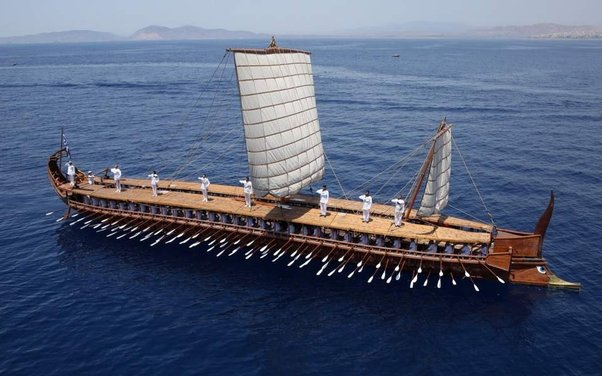
Athenian trireme : Epitome of naval engineering
The Athenian trireme, considered the epitome of this ancient vessel, can be reconstructed with remarkable precision through a combination of archaeological excavations, painted pottery, and classical writings, such as those by Thucydides. What set the Athenian ship apart was its unparalleled propulsive power, achieved by the strategic arrangement of 170 oarsmen in three tiers along each side of the vessel.
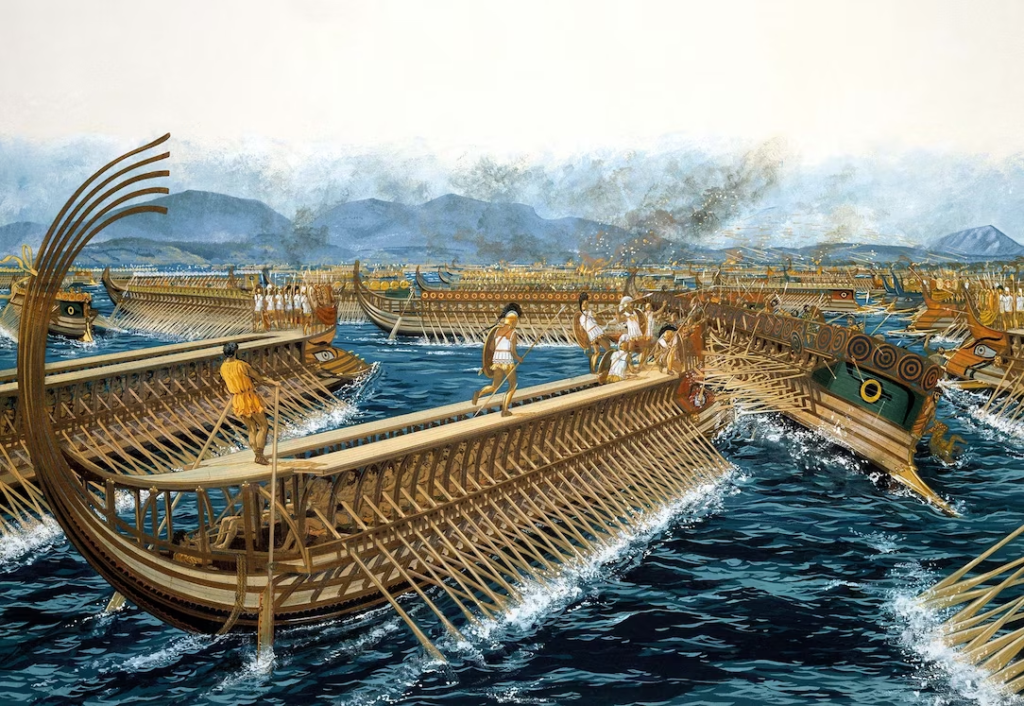
The construction and dimensions
The hull of the trireme was a thin shell of planks joined edge-to-edge, reinforced by a keel and light transverse ribs. This lightweight construction allowed this ship to displace a mere 40 tons, despite its overall length of approximately 120 feet (37 meters) and a beam of 18 feet (5.5 meters). Remarkably, no ballast was used, contributing to the vessel’s agility and speed.
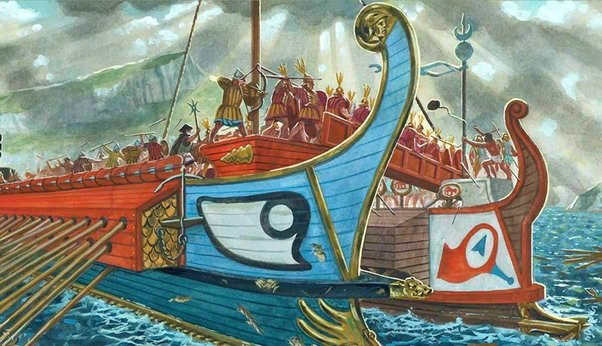
Propulsion and speed
The trireme’s impressive speed, capable of reaching over 7 knots (8 miles per hour or 13 km/h) and possibly as high as 9 knots under oars, was a testament to its innovative design. The synchronized efforts of the oarsmen in the three tiers, numbering 31 in the top tier, 27 in the middle, and 27 in the bottom, created a formidable propulsive force.
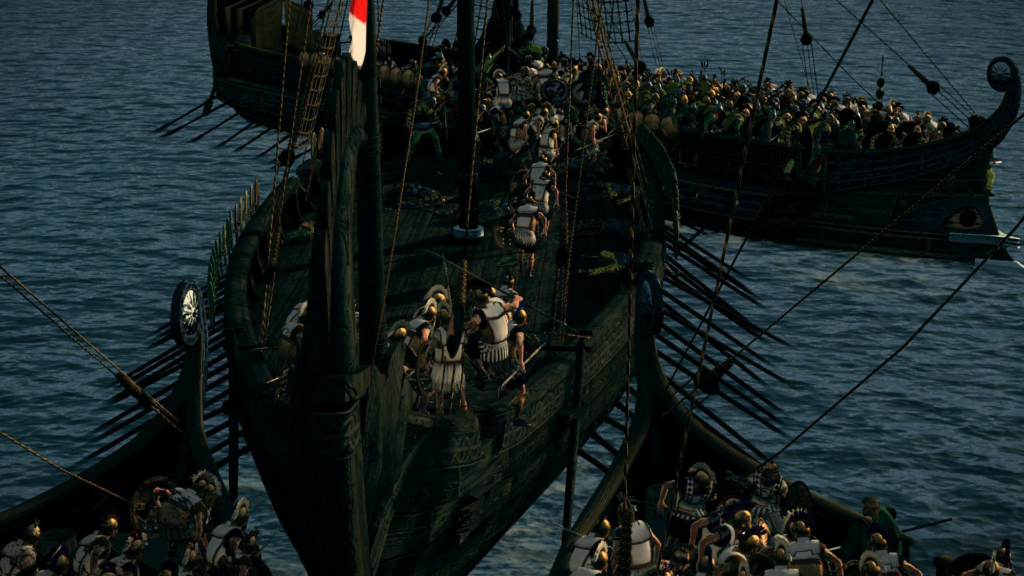
Armament and naval tactics
The trireme’s principal armament, a formidable bronze-clad ram extending from the keel at or below the waterline, symbolized its devastating offensive prowess. Crafted with precision, this lethal attachment was strategically designed to pierce through the comparatively fragile hulls of enemy warships, effectively incapacitating and crippling them in naval engagements. The sheer force and strategic advantage provided by the ram made the trireme an unparalleled force on the seas.

In addition to its iconic ram, the trireme was equipped with a well-trained complement of spearmen and bowmen, strategically positioned across the vessel. These skilled warriors played a pivotal role in naval tactics, engaging enemy crewmen from a distance with precision archery or seamlessly transitioning to close-quarter combat with their spears. This dual capability allowed the trireme to adapt to various combat scenarios, enhancing its overall effectiveness in both offensive and defensive maneuvers.
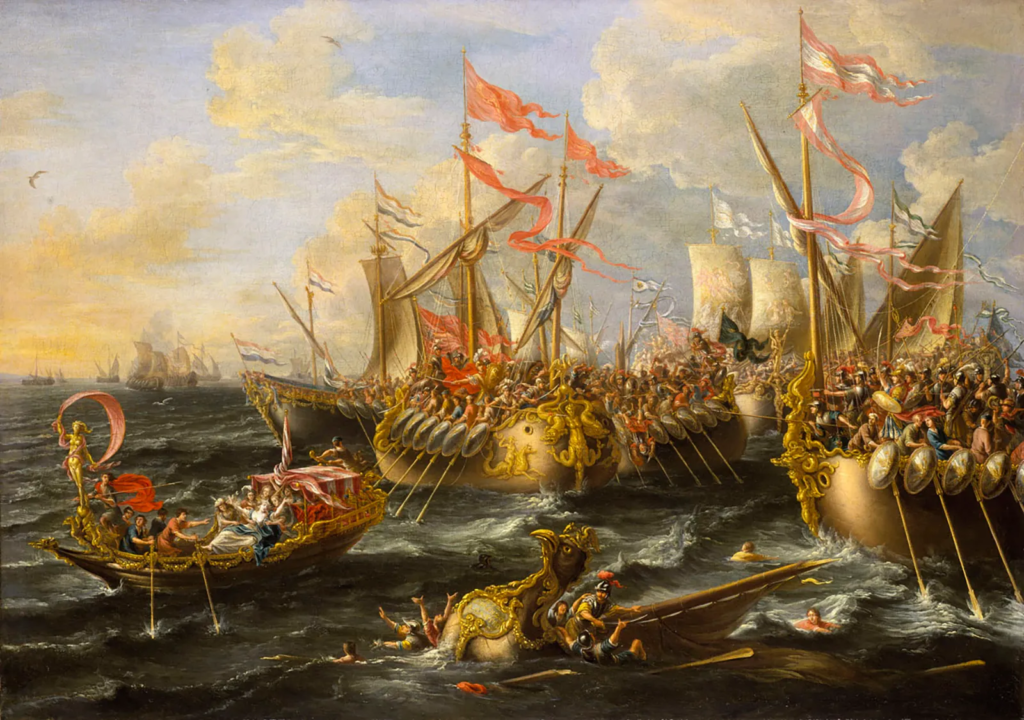
Evolution and decline
As naval warfare progressed, armed deck soldiers became increasingly important. By the end of the 4th century BCE, the trireme found itself superseded by heavier, decked-over ships with multiple rows of oarsmen. This marked the end of an era for the trireme, but its legacy endured in the annals of naval history.
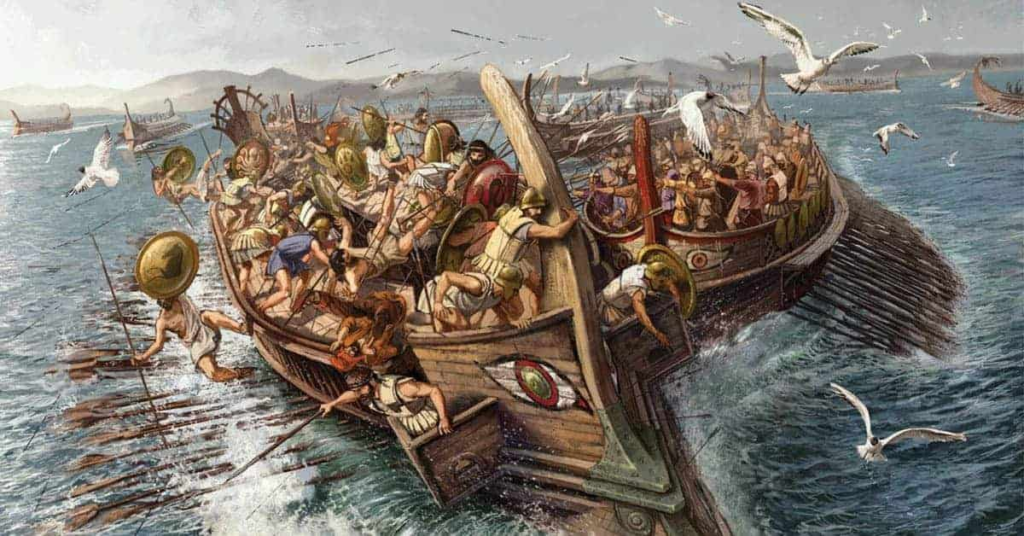
Conclusion
The trireme, a marvel of ancient naval engineering, left an indelible mark on the history of maritime warfare. Its unique design, speed, and strategic capabilities made it a key player in the conflicts that shaped the ancient Mediterranean world. Though the trireme eventually gave way to more advanced ship designs, its legacy lives on as a testament to the ingenuity of ancient naval architects and the importance of maritime power in shaping the course of history.
To explore more news : Click Here
ALSO READ : The Bab Al Mandeb : Navigating Through The Gateway Of Global Tensions And Trade




































